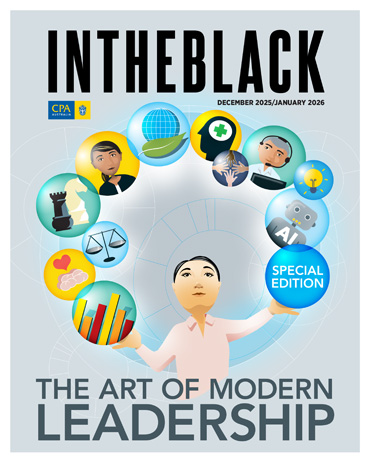Loading component...
At a glance
- When the accounting standard for intangible assets was launched 25 years ago, digital assets were in their infancy.
- The International Accounting Standards Board is now undertaking a detailed review of IAS 38 Intangible Assets.
- At stake are trillions of dollars worth of intangibles that companies currently do not recognise in their balance sheets.
By Gary Anders
Launched in Stockholm in 2028, streaming service Spotify now has 678 million monthly active users and hosts over 100 million songs as well as nearly seven million podcast titles on its platform.
Spotify generates billions of dollars in revenue annually, but how much are these prized digital assets, together with Spotify’s technologies, trade names, relationships and patents worth?
The answer, at least according to the company’s 2024 consolidated financial statements, is €48 million (A$86 million) — a minuscule amount in the context of Spotify’s total assets of just over €12 billion at 31 December 2024.
Under existing accounting standards, the values of internally generated assets such as intellectual property; brands; digital assets including software, databases and domain names; human capital and organisational knowledge; and contracts and relationships are all intangibles that cannot be recorded among a company’s balance-sheet assets.
A balance-sheet value can be placed on acquired intangible assets from a takeover or merger, following initial recognition these assets are carried at their cost minus accumulated amortisation and impairment losses.
A tangible plan
It is now almost 25 years since the accounting standard governing the treatment of intangible assets on balance sheets was formalised in IAS 38 Intangible Assets.
IAS 38, Australia’s AASB 138 and versions of the standard adopted in other countries, set out the criteria for the recognition of intangible assets, their measurement, amortisation, impairment and disclosure requirements in financial statements.
Yet, most experts would agree that the intangible assets standard has now become outdated, particularly considering the huge advances in information technology that continue to transform company operations around the world.
"Companies should be encouraged to talk more about their intangible assets — in annual reports, investor presentations and board discussions. That way, stakeholders can better understand what these assets are, what they’re worth and how they’re being protected."
To address the issue, the International Accounting Standards Board (IASB) is undertaking a comprehensive review of IAS 38 in order to improve the usefulness of the information that entities provide about intangible items in their financial statements. The IASB also intends to update the standard to make it more suitable for contemporary intangible items and the new ways of using them.
As part of the global project, the IASB has initially decided to explore user needs for information about recognised and unrecognised intangible assets and expenditure associated with them in financial statements.
It is also considering whether to update the definition of an intangible asset, associated guidance and some aspects of the recognition criteria, particularly in relation to newer types of intangible assets.
A blind spot for investors
Frances Drummond, a principal of IP Advisory at Deloitte, says the undisclosed value of intangible assets on company balance sheets is huge — and growing.
Internal research by Deloitte has found that an estimated A$1.6 trillion of assets are effectively missing from the audited financial statements of the top 100 companies listed on the Australian Securities Exchange (ASX). Across the whole of the ASX, the number is likely to be at least double that, Drummond notes.
This is a major blind spot for investors because they are unable to see the real value of the companies they are investing in.
“We’ve been working with the Australian Institute of Company Directors over the past two years to encourage more conversations around intangible assets,” she says.
“We’re urging board directors to ask more questions and push management to explain how these assets are composed.
“There’s a lot of undisclosed value out there, and worse, much of it isn’t even being discussed.”
Companies could start to address the problem by including more information in their annual reports, Drummond says.
“That would be a step in the right direction. We’re not necessarily advocating for mandatory disclosure of all intangible assets on the balance sheet — that would be a huge burden.
“This topic has been under global discussion for over 20 years, but progress has been glacial. Still, companies should be encouraged to talk more about their intangible assets in annual reports, investor presentations and board discussions. That way, stakeholders can better understand what these assets are, what they’re worth and how they’re being protected.”
Dr Michael Falk, chief economist at IP Australia, says intangibles are an increasingly significant driver of value for many businesses across a range of industries, and underpin economic and productivity growth.
“Our Australian IP Report 2025 suggests businesses that are savvy in managing their intellectual property as part of their business strategy achieve stronger economic outcomes,” Falk says.
“For example, businesses that are proactive in how they engage with the patent system, taking advantage of its flexibility to speed up application timeframes, commercialise more innovative products and realise more lifetime value from their intangible assets.
“Intellectual property (IP) rights also act as a valuable shock absorber for businesses facing rapid change in global markets. For example, during periods of uncertainty, businesses may be able to use IP rights as a store of value, recouping their investments in intangible assets later by licensing or trading their IP.”
Michael Masterson, principal of boutique advisory firm Intrinsika, which specialises in identifying, securing and leveraging the intrinsic assets in businesses, says the accounting definition of intangibles is too limiting and does not reflect real value.
“For example, accountants might say data is worth zero — or worse, lump it into ‘goodwill’, which is essentially a placeholder for ‘we don’t know what this is worth’. Goodwill is rarely broken down or explained, which is unhelpful for anyone trying to acquire or understand the asset.”
It’s not just about the things “you can’t kick with your toe”, Masterson says, it is about identifying the core elements that drive real value.
How accounting for intangibles could be changing
Sights on Singapore
As the IASB deliberates on the accounting treatment of intangibles, one reference point could be Singapore’s intangibles framework.
In late 2023, the Intellectual Property Office of Singapore (IPOS) and Singapore’s Accounting and Corporate Regulatory Authority launched the voluntary Intangibles Disclosure Framework (IDF).
It was designed for companies to disclose and communicate the value of intangible assets including brands, patents, registered designs, human capital and other internally generated intangibles.
“The IDF is part of the Singapore IP Strategy (SIPS) 2030 and is a key step to help enterprises commercialise their intangible assets,” notes Indranee Rajah, Singapore’s Second Minister for Finance.
"With the rise of integrated and sustainability reporting, we now have frameworks that allow organisations to disclose information that’s material but not necessarily financial in nature. This opens the door to a more holistic view of intangible assets."
“Improving intangible assets disclosures can lead to better investment decisions, improved risk management and increased competitiveness in our markets.”
A survey conducted by IPOS reveals that four out of five enterprises in Singapore want more opportunities to use their intangible assets to help grow their business, including to obtain financing.
Singapore is not alone in this. The UK Endorsement Board (UKEB), the United Kingdom’s national standard setter for international accounting standards, has initiated its own research project on accounting for intangible assets.
Without reaching any formal conclusions to date, UKEB has acknowledged the growing importance of intangible assets in underpinning the growth of UK companies and describes its research as a “once-in-a-generation opportunity for change”.
A way forward in view
The European Financial Reporting Advisory Group (EFRAG) foreshadowed the IASB’s current review of IAS 38 with the 2021 publication of Better Information on Intangibles: Which is the best way to go? followed by the release of its recommendations and feedback statement in 2023.
EFRAG recommended that the IASB conduct a review with the aim to better reflect the ever-increasing importance of intangible assets, improve comparability between companies, and address emerging types of transactions and assets, including emissions trading rights and crypto assets.
CPA Australia’s research paper, The Horizons of Financial Reporting — Part 2: Investor perspectives and measurement uncertainty, has found that investors support expanded reporting of intangible assets in financial statements, providing standardised measurement techniques can be established and transparently communicated in note disclosures.

Ram Subramanian, financial reporting lead, policy & advocacy at CPA Australia, says the solution to intangible assets reporting may not lie entirely within financial statements themselves but involve a combination of financial statements and sustainability information.
“The way accounting is structured creates a threshold for an asset to be recognised,” Subramanian says. “I can see some serious challenges for that asset threshold to be met by certain intangible assets such as brands, internally generated intellectual property or proprietary data.
“The answer may be elsewhere, outside of traditional financial statements. With the rise of integrated and sustainability reporting, we now have frameworks that allow organisations to disclose information that’s material but not necessarily financial in nature. This opens the door to a more holistic view of intangible assets.
“Ultimately, the accounting standards we use today were not designed for the digital age. While it may take decades for them to evolve, that doesn’t mean we cannot start bridging the gap now.”
Are we headed toward a dematerialised economy?

In the business world, the future of economic value is increasingly being dematerialised. Instead of property, plant and equipment, intellectual property such as software, data, brand equity and patents are now the lifeblood of revenue, earnings and value for many enterprises.
According to IP Australia — the federal government agency responsible for administering intellectual property rights and legislation — in 2024 there was a record number of new design filings and a further rise in trademark applications.
In Australia, the IP sector is responding dynamically to shifts in innovation, trade and global competition. The Australian IP Report 2025 highlights shifting trends including strong growth in filings related to electric vehicles, with transport patents up 12.8 per cent and design filings in this category overtaking computing equipment.
Biotechnology patent filings were also up by 32 per cent in 2024, likely reflecting Australia’s strengthening industry and global partnerships.
Dr Michael Falk, IP Australia’s chief economist, says businesses that are savvy at managing their IP as part of their strategy achieve stronger economic outcomes.
He notes that IP rights enable businesses to value, transfer and monetise their intangible assets, which enhances the economic return from their investment and helps a business to differentiate itself in the market.
“International research suggests that a firm being granted its first patent generates a 12 per cent increase in revenue per worker and a 22 per cent increase in employment.”
Increasingly, artificial intelligence (AI) and data are being recognised as critical inputs into innovation, prompting the global reassessment of IP frameworks.
“IP Australia is participating in international discussions on how to ensure IP systems keep pace with AI-driven innovation, and how to best harness the benefits of AI while making sure appropriate guardrails are in place,” Falk says.

